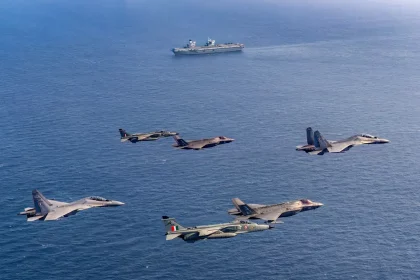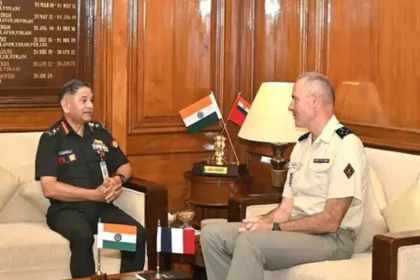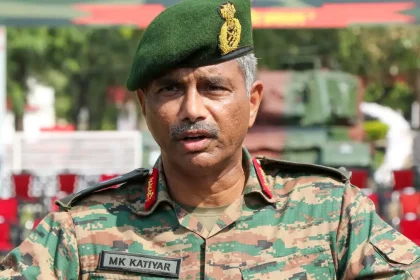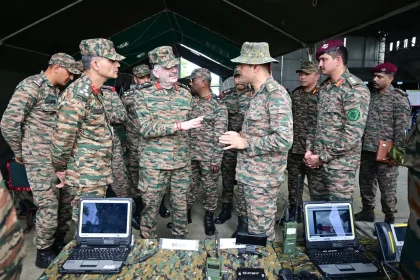IAF and Royal Navy Conduct Joint Exercise Over Indian Ocean Region with Sukhoi-30 MKIs, Jaguars, and F-35Bs
IAF Sukhoi-30 MKIs, Jaguars, AWACS join Royal Navy F-35Bs over Indian Ocean to boost interoperability and regional security.
French Army Chief Shows Keen Interest in Indian Long-Range Systems and Emerging Battlefield Cooperation
French Army Chief highlights India’s combat-proven long-range systems, loitering munitions, AI, and EW capabilities as key areas for strategic defence…
Lt Gen Manoj Kumar Katiyar Calls for Deadlier Operation Sindoor 2.0 if Pakistan Continues Terror Attacks
Western Command Chief emphasizes India’s preparedness and warns of stronger retaliation in a potential Operation Sindoor 2.0 against terror threats…
Lt Gen CG Muralidharan Inaugurates Department of Hospital Administration to Streamline Healthcare for Personnel
New Department of Hospital Administration at Army Hospital (R & R) enhances efficiency and quality of healthcare for soldiers and…
Spear Corps Swiftly Responds to Medical Emergency, Saves 12 Students in Manipur
Eastern Command’s medical teams at Leimakhong save 12 schoolchildren in a rapid humanitarian response, reinforcing the Army’s commitment to public…
Eastern Command Conducts Maiden Tri-Services Integrated Exercise to Enhance Multi-Domain Operational Capabilities
Eastern Command’s first integrated Tri-Services exercise showcases India’s growing synergy, technological edge, and preparedness for modern multi-domain warfare.






